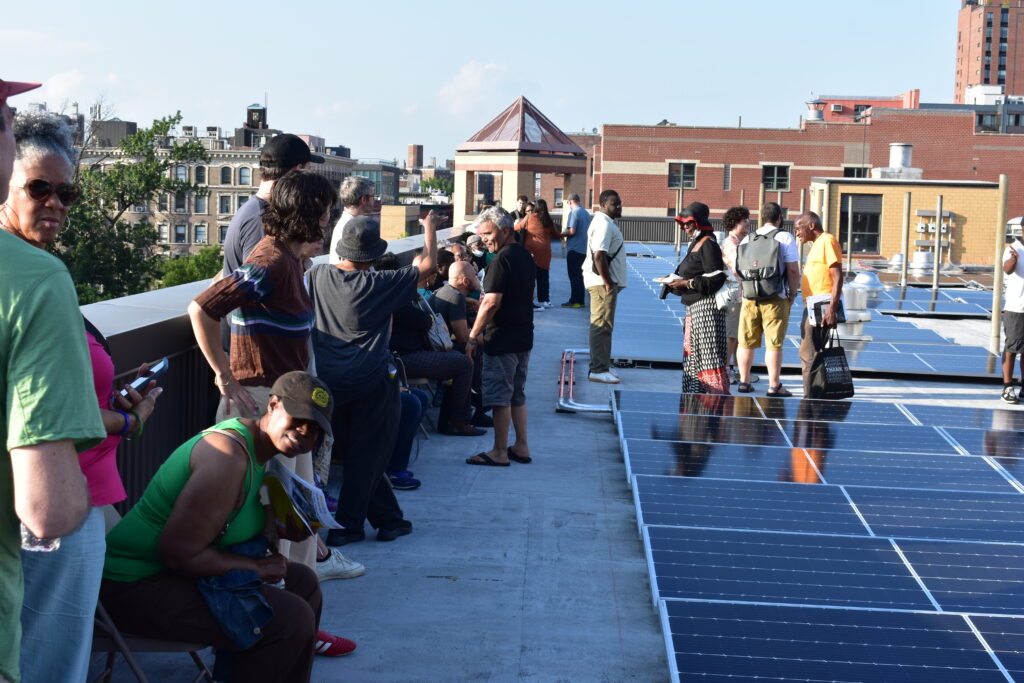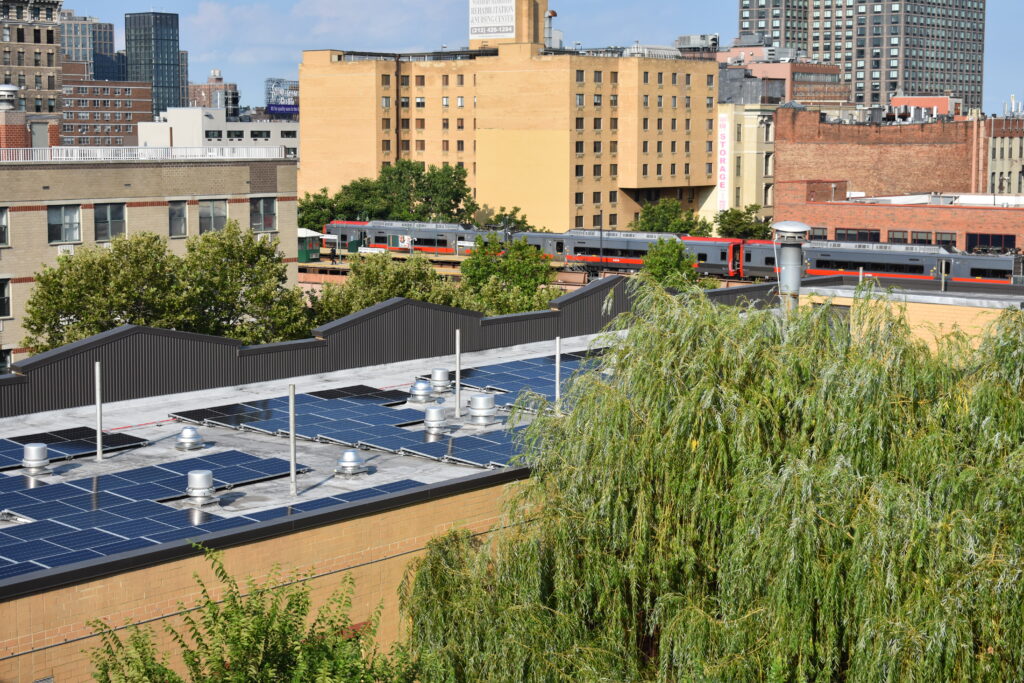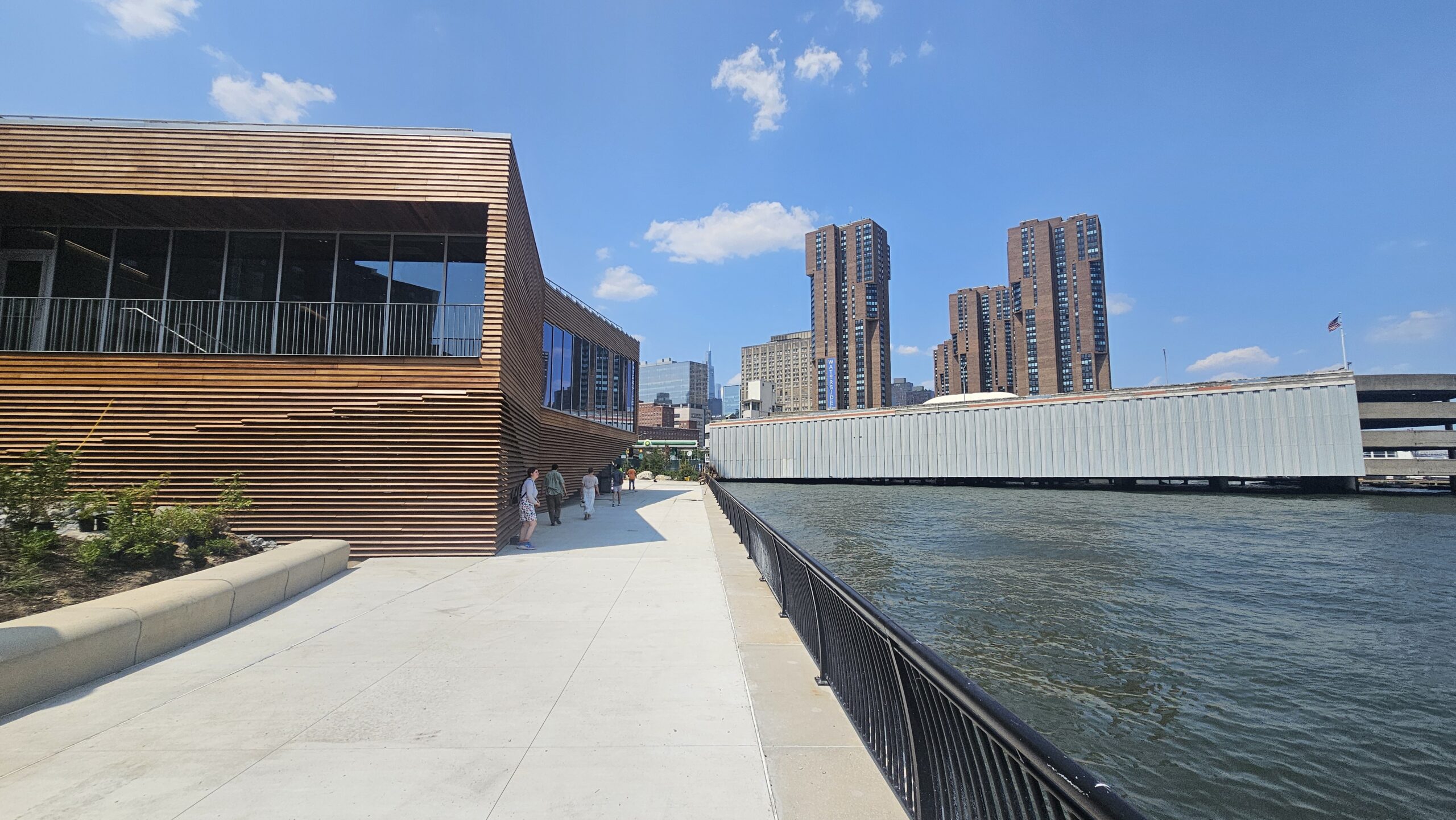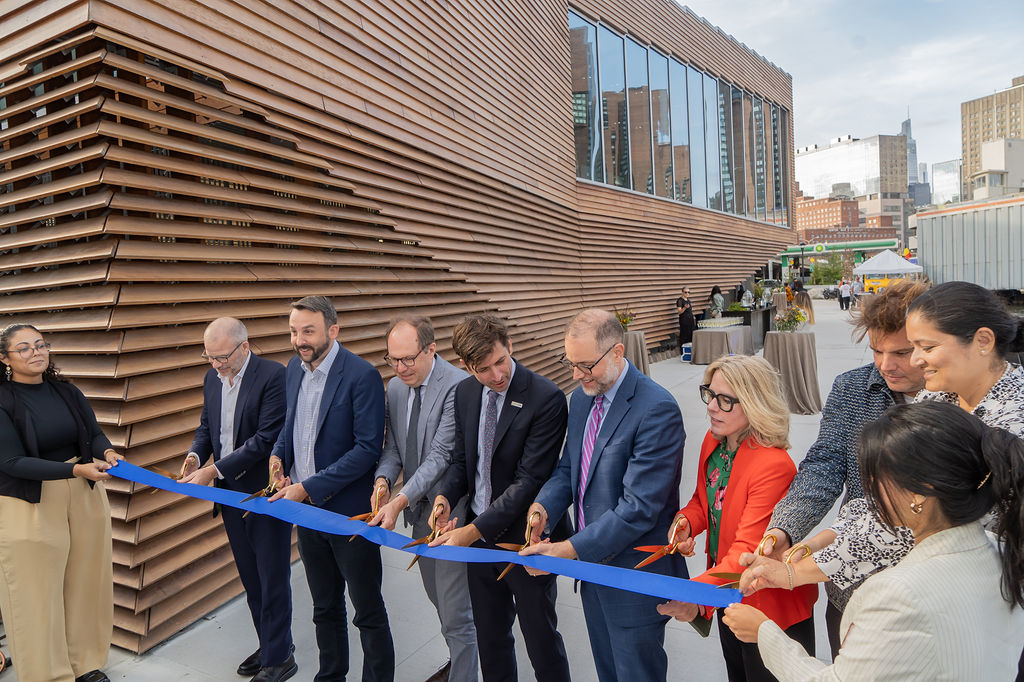How To Access Federal Solar Incentives While They Last
Background: On July 4th, the much-debated “One Big Beautiful Bill Act” (HR1) was signed by President Trump and became law. On top of gutting essential social service programs and removing Medicaid coverage for over 10 million Americans, the legislation reverses national climate investments – eliminating clean energy tax credits, environmental justice grants, and support for building decarbonization and clean manufacturing. The spending cuts will severely damage a flourishing rooftop and community solar industry nationwide, and create an immense sense of urgency for developers and homeowners installing distributed solar projects that hope to take advantage of solar tax credits while they are still available.
Please see below for a summary of changes to federal solar tax credits for rooftop and community solar projects, eligibility deadlines, and the steps to take advantage of incentives while they are still available:

Section 1: Changes To Solar Tax Credits in HR1
Residential Solar Tax Credit – Section 25D
What it was: Homeowners, including single-family homes and multifamily condos and co-ops, can claim a tax credit valued at 30% of the cost of installing solar on their property.
What changed in HR1: The residential solar tax credit is now only available to homeowners for eligible expenditures made through December 31, 2025. Eligible expenditures are considered made when the solar system has completed installation.
Commercial Solar Tax Credit (Investment Tax Credit, “ITC”) – Section 48E
What it was: The ITC provides a tax credit valued at 30% of the costs of installing solar for commercial and nonprofit entities. This includes solar on multifamily rental and commercial buildings; solar on nonprofit-owned buildings, including houses of worship; large-scale solar, including community solar; and third-party-owned residential systems, including leases, power purchase agreements.
What changed in HR1: Projects must be placed-in-service by December 31, 2027 to qualify for the ITC. Alternatively, projects that can meet “safe harbor” criteria by July 4, 2026 are eligible for the full ITC credit value and have an additional 4 years to be placed-in-service.
Note:The new phaseout timeline for the ITC only applies to solar and wind projects. Commercial battery storage, geothermal, hydrogen, nuclear and other forms of zero-emission technologies will continue to be eligible for the ITC under the original Inflation Reduction Act rules, and begin phaseout in 2032.
How to “Safe Harbor” Your Solar Project
“Safe harbor” is a way to lock in tax credits by performing some portion of work on a project, even if the project is not completed. It is often referred to as “commence construction.” Only the Commercial ITC is available to “safe harbor” for solar, not the Residential Tax Credit (25D).
For solar projects under 1.5 MW-AC (almost all residential and commercial projects), the “safe harbor” criteria is defined by the IRS as either:
- Starting “physical work of a significant nature”, or
- Spending at least 5% of project costs
For larger solar projects above 1.5 MW-AC (such as community solar or utility-scale solar), the “safe harbor” criteria can only be met by starting “physical work of a significant nature”, defined in August 2025 guidance. Aside from on-site physical work, eligible activities include some off-site physical work such as the manufacture of components, mounting equipment, support structures such as racks and rails, and inverters.
As it is written in HR1, developers that wish to safe harbor the ITC need to meet these criteria by July 4th, 2026, and then would have 4 calendar years to have their solar system placed-in-service. For example, if you safe harbor on 8/20/2025, you have until 12/31/2029 to place-in-service to qualify for the credit.
If you intend to safe harbor your solar tax credit, please consult with a professional tax adviser to ensure that you are meeting all necessary requirements.
Foreign Entities of Concern (FEOC) Restrictions
What it is: New material sourcing and ownership restrictions are intended to reduce reliance on foreign entities – particularly China – beginning in 2026.
Beginning January 1, 2026, no “specified foreign entity” or “foreign-influenced entity” can claim the ITC. Additionally, to claim the ITC, clean energy projects commencing after January 1, 2026 must not receive “material assistance” from foreign entities of concern.
By December 31, 2026, the Treasury is ordered to issue guidance on how to determine the costs attributed to foreign entities. Until then, developers are directed to use the existing guidance in the tables in the IRS notice for Domestic Content eligibility to calculate the percentage of materials cost. We strongly recommend that developers work closely with their project installers and tax professionals to ensure compliance with these new restrictions.
What HR1 Did Not Cut
Direct Pay for Non-Profits*: Allows federally tax-exempt entities to take the full value of the ITC as a tax refund using “Elective Pay.”
Transferability: Project owners that do not qualify for Direct Pay, but also do not have the tax liability to benefit from the ITC, can sell their tax credits to a third-party buyer. The only change to transferability is that FEOC provisions apply beginning January 1, 2026, meaning that the third-party buyer cannot be a Foreign Entity of Concern.
Low-Income Community Bonus Credits*: Provides bonus credit (10-20%) added to the ITC for solar projects that provide benefits to low-income communities or qualified affordable housing.
Domestic Content Bonus Credit: 10% bonus credit added to the ITC for projects if US-manufactured content requirements are satisfied.
Energy Community Bonus Credit: 10% bonus credit for ITC projects for being located in a specified “energy communities” defined by a combination of former fossil fuel industry and unemployment.
*Note: While Direct Pay and Low-Income Community Bonus Credits are still technically available, projects counting on these mechanisms should build in additional buffer time for potential administrative delays and ensure they are in compliance with application requirements.
Section 2: Guidance for Buildings and Projects
For Homeowners
What was available: Homeowners could use the Residential Solar Tax Credit (25D) to claim a tax credit valued at 30% of the cost of installing solar on their property.
What changed in HR1: The Residential Solar Tax Credit (25D) is now only available to homeowners for eligible expenditures made through December 31, 2025. Eligible expenditures are considered made when the solar system has completed construction.
Solar One Guidance: Homeowners who want to install solar should move as quickly as possible to have their solar projects completed by December 31, 2025 to take full advantage of the tax credit while it is available.
Homeowners who are unable to meet the end-of-year 2025 deadline should strongly consider third-party ownership for their solar system, either through a solar lease or a power purchase agreement (PPA). Third-party-owned systems utilize a different tax credit (48E) that will be available for a longer time.
For Co-op and Condo Shareholders
What was available: Co-ops and condos that install solar could use either the Residential Solar Tax Credit (25D) or the Commercial Investment Tax Credit (48E), or “ITC”, to claim a tax credit valued at 30% of the cost of their solar installation.
- Residential Solar Tax Credit: Because co-ops and condos do not typically pay federal taxes as a building, the most common method has been to take the Residential Solar Tax Credit (25D) and pass the tax credit down to the individual co-op or condo shareholders, divided according to the relative percentage of building ownership. Each shareholder can then claim the tax credit against their personal federal income tax liability.
- Commercial Investment Tax Credit: If a co-op or condo does owe federal income taxes –for instance, due to the sale of a unit or income from a rental space or parking lot– the building may be able to take the Commercial Investment Tax Credit (48E) against that tax liability. This method is less common, but it means that the tax credit can be absorbed by the building entity’s finances.
What changed in HR1:
- Residential Solar Tax Credit: The Residential Solar Tax Credit is now only available for eligible expenditures made through December 31, 2025. Eligible expenditures are considered made when the solar system has completed construction.
- Commercial Investment Tax Credit: The ITC will now end after 2027. Projects must be placed-in-service (fully operational) by December 31, 2027 to qualify for the credit. Projects that begin construction – using “safe harbor” rules – by July 4, 2026 are eligible for the full ITC credit and have an additional 4 years to be placed-in-service, and do not need to meet the 2027 placed-in-service deadline.
Solar One Guidance: Co-op and condos that want to install solar and utilize the Residential Solar Tax Credit (25D) should move as quickly as possible to have their solar projects completed by December 31, 2025 in order to take full advantage of the tax credit while it is available. Confirm with your solar installer that they can schedule the install before the end of the year.
Co-ops and condos that are unlikely or unable to meet the 2025 deadline for the Residential Solar Tax Credit should strongly consider taking advantage of the ITC through alternative routes. If their building as an entity will owe federal taxes during 2025, 2026 or 2027, they can consider matching the solar installation with the year that the building will have income taxes due. Alternatively, building owners can consider third-party-ownership, such as a solar lease or power purchase agreement.
For Commercial and Nonprofit Buildings Including Multifamily Affordable Housing, Nonprofits & Faith-Based Institutions, and New Construction
What was available: Developers and owners of commercial buildings could utilize the Commercial Investment Tax Credit (48E), or “ITC” to claim a tax credit valued at 30% of the costs of installing solar.
What changed in HR1: Projects must be placed-in-service by December 31, 2027 to qualify for the credit. Projects that begin construction (aka “safe harbor” rules) by July 4, 2026 are eligible for the full ITC credit value and have 4 years to be placed-in-service, and do not need to meet the 2027 placed-in-service deadline.
- Note for Nonprofits Utilizing Direct Pay: Fortunately, under HR1, the Direct Pay mechanism will continue to remain in place as long as the underlying tax credits exist and the project meets eligibility deadlines. Direct Pay has a couple of important administrative steps, including pre-filing and receiving approval with the IRS at the early stages of your project. While our experience is that Direct Pay approvals have been consistent under the Trump administration, we don’t know yet how any cuts to program staff will affect turnaround and response times, so it is more important than ever to make sure you are in compliance and are meeting all deadlines in a timely manner.
Solar One Guidance: Those that can meet the 2027 placed-in-service deadline should create and follow a project development timeline that ensures their project is able to do so. Developers and building owners that are unlikely or unable to meet the placed-in-service deadline should move quickly to meet “safe harbor” criteria by July 4, 2026.
- For Affordable Housing: If you are planning on filing for Low-Income Community Bonus Credits, we strongly emphasize making sure that you stay in compliance with any program rules and timelines. While it remains available, we are uncertain about how any cuts to the program staff will impact timely bonus credit approvals and delivery. Additionally, because this is a capped, competitive program, we never recommend fully counting on these bonus credits in your capital stack – and that is more relevant than ever today.
For Nonprofits: While our experience is that Direct Pay approvals have been consistent under the Trump administration, we don’t know yet how any cuts to program staff will affect turnaround and response times, so it is more important than ever to make sure you are in compliance and are meeting all deadlines in a timely manner.
For Commercial and Nonprofit Buildings Including Multifamily Affordable Housing, Nonprofits & Faith-Based Institutions, and New Construction
What was available: Developers and owners of commercial buildings could utilize the Commercial Investment Tax Credit (48E), or “ITC” to claim a tax credit valued at 30% of the costs of installing solar.
What changed in HR1: Projects must be placed-in-service by December 31, 2027 to qualify for the credit. Projects that begin construction (aka “safe harbor” rules) by July 4, 2026 are eligible for the full ITC credit value and have 4 years to be placed-in-service, and do not need to meet the 2027 placed-in-service deadline.
- Note for Nonprofits Utilizing Direct Pay: Fortunately, under HR1, the Direct Pay mechanism will continue to remain in place as long as the underlying tax credits exist and the project meets eligibility deadlines. Direct Pay has a couple of important administrative steps, including pre-filing and receiving approval with the IRS at the early stages of your project. While our experience is that Direct Pay approvals have been consistent under the Trump administration, we don’t know yet how any cuts to program staff will affect turnaround and response times, so it is more important than ever to make sure you are in compliance and are meeting all deadlines in a timely manner.
Solar One Guidance: Those that can meet the 2027 placed-in-service deadline should create and follow a project development timeline that ensures their project is able to do so. Developers and building owners that are unlikely or unable to meet the placed-in-service deadline should move quickly to meet “safe harbor” criteria by July 4, 2026.
- For Affordable Housing: If you are planning on filing for Low-Income Community Bonus Credits, we strongly emphasize making sure that you stay in compliance with any program rules and timelines. While it remains available, we are uncertain about how any cuts to the program staff will impact timely bonus credit approvals and delivery. Additionally, because this is a capped, competitive program, we never recommend fully counting on these bonus credits in your capital stack – and that is more relevant than ever today.
- For Nonprofits: While our experience is that Direct Pay approvals have been consistent under the Trump administration, we don’t know yet how any cuts to program staff will affect turnaround and response times, so it is more important than ever to make sure you are in compliance and are meeting all deadlines in a timely manner.
For Community Solar
What was available: Community Solar developers could utilize the Commercial Investment Tax Credit (48E) to take a tax credit valued at 30% of the costs of installing solar.
Additionally, some Community Solar projects were able to qualify for the Low-Income Community Bonus Credit Program, which provided additional tax credit to certain applicable solar projects that provided financial or community development benefits to identified low-income communities or qualified affordable housing. These bonus credits provided an additional 10-20% tax credit to the base ITC (30%).
What changed under HR1: Projects that begin construction (aka “safe harbor” rules) by July 4, 2026 are eligible for the full ITC credit value and have 4 years to be placed-in-service. Projects that do not meet the safe harbor deadline must be placed-in-service by December 31, 2027 to qualify for the credit.
Regarding the Low-Income Community Bonus Credit Program, while these credits were not changed in the bill and are still technically available at their full value, we are uncertain about how efficiently the program will be administered due to administrative cuts.
On August 15th, 2025, the IRS provided additional guidance on safe harbor eligibility and procedures. This new guidance eliminates the ability to safe harbor the ITC using the “Five Percent” rule for projects above 1.5 MW-AC – these projects must begin “Physical Work of a Significant Nature” if they intend to safe harbor the tax credit. Projects under 1.5 MW-AC can utilize either the “Five Percent” or “Physical Work of a Significant Nature” to comply with safe harbor guidelines.
Solar One Guidance: Community Solar developers should move quickly to meet “safe harbor” criteria if they aren’t certain they can place-in-service by December 31, 2027. Those who can meet the placed-in-service deadline should create and follow a project development timeline that ensures their project is able to do so.
Projects that are expecting the Bonus Credits should make sure that they stay in compliance with any program rules and timelines. While Bonus Credits remain available, we are uncertain about how cuts to the program staff will impact timely credit approvals and delivery. Additionally, because this is a capped, competitive program, we never recommend fully counting on these bonus credits in your capital stack – and that is more relevant than ever today.
Section 3: Additional Resources
Background: On July 4th, the much-debated “One Big Beautiful Bill Act” (HR1) was signed by President Trump and became law. On top of gutting essential social service programs and removing Medicaid coverage for over 10 million Americans, the legislation reverses national climate investments – eliminating clean energy tax credits, environmental justice grants, and support for building decarbonization and clean manufacturing. The spending cuts will severely damage a flourishing rooftop and community solar industry nationwide, and create an immense sense of urgency for developers and homeowners installing distributed solar projects that hope to take advantage of solar tax credits while they are still available.
- Links to our Teach-In resources:
- Reference Links:
- Full final legislation text for the “One Big Beautiful Bill”
- Crux Climate – Summary of the “One Big Beautiful Bill” clean energy impacts
- L4GG Guidance Brief: Updates to Credits Eligible for Elective Pay under H.R. 1
- Crux Climate – Foreign Entity of Concern (FEOC) Definitions
- IRS Homepage for Direct Pay and Transferability
- L4GG Guidance Brief: Beginning of Construction for Elective Pay
About Solar One
Solar One is a 501(c)(3) not-for-profit organization founded in 2004 whose mission is to design and deliver innovative environmental education, green workforce training, and solar technical assistance that fosters sustainability and resiliency in diverse urban environments.



